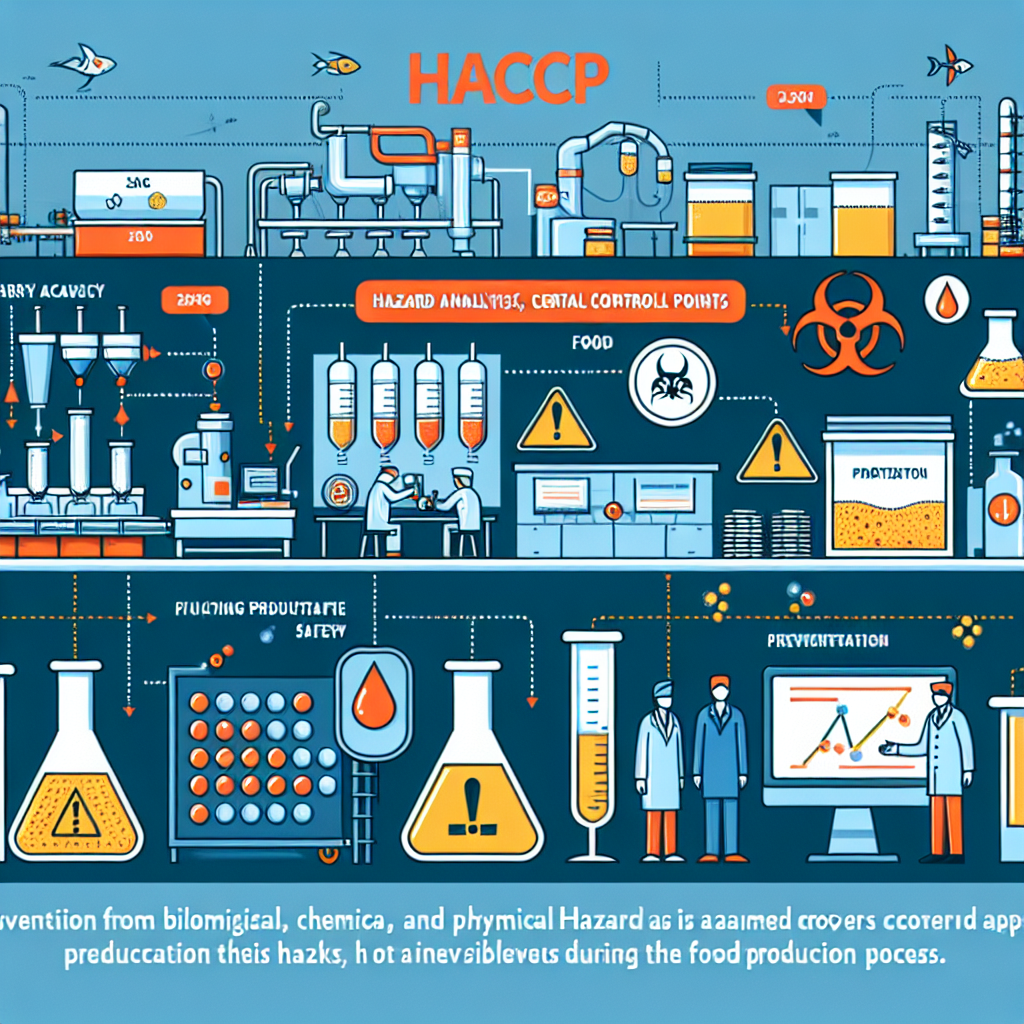An overview of the essential elements of the Hazard Analysis and Critical Control Points (HACCP) system in ensuring food safety.
Hazard Analysis and Critical Control Points (HACCP) is a systematic preventive approach to food safety from biological, chemical, and physical hazards in production processes that can cause the finished product to be unsafe, and designs measurements to reduce these risks to a safe level.
This system can be used at all stages of a food chain, from food production and preparation processes including packaging, distribution, etc. The HACCP system is recognized internationally and is used as a method to regulate food safety and protect public health.
The primary goal of HACCP is to control health hazards by identifying and controlling potential points of contamination during the food handling process. The approach is systematic and structured, involving critical control points (CCP), hazard analysis, and implementing effective control measures. This article provides a detailed guide on the key components of the HACCP system and how it is implemented in food safety.
1. Assemble the HACCP Team
The first step in developing a HACCP plan is to assemble a team with diverse knowledge and expertise in the HACCP system and food safety. The team should include individuals from various departments such as production, quality assurance, food microbiology, engineering, and legal sectors as well as other areas of expertise depending on the particular product and process. This interdisciplinary team will collaborate to develop, implement, and maintain the HACCP system.
2. Describe the Food and Its Distribution
The HACCP team begins by defining the food under consideration, its distribution, and its ultimate use by the consumer. This includes a general description of the food, ingredients, and processing methods, as well as information on how the food is stored, transported, and where it is sold to consumers. Understanding this lifecycle is crucial for identifying where potential hazards could occur.
3. Identify the Intended Use and Consumers
Identifying the intended use and the target consumers of the food product is critical. This involves understanding how the product will be handled and prepared by consumers, as well as identifying the groups at greater risk for foodborne illness, such as the elderly, pregnant women, infants, or individuals with compromised immune systems. This step helps provide focus to the hazard analysis and ensure that all possible risks are considered.
4. Construct a Flow Diagram
The next step is to create a detailed flow diagram that outlines each step of the food production process from receiving through processing, shipping, and distribution to the final consumer. Each step should be reviewed and verified by the HACPP team to ensure it accurately reflects the processing operation.
5. On-site Confirmation of Flow Diagram
Verifying the flow diagram involves the HACCP team physically observing processes and comparing them to what is depicted in the workflow. This ensures that the flow diagram correctly represents all steps and sequences in the process and identifies any areas not previously considered in the hazard analysis.
6. Conduct a Hazard Analysis
The crux of HACCP is identifying potential hazards associated with a food production process. For each step, the HACCP team will identify potential hazards, determine whether the hazards are significant, and develop control measures that will eliminate or reduce them to acceptable levels. Hazards can be of biological, chemical, or physical nature.
7. Determine Critical Control Points (CCPs)
Once hazards have been identified, the next step is to determine the critical control points (CCPs). These are points, steps or procedures in a food manufacturing process where control can be applied and as a result, a food safety hazard can be prevented, eliminated, or reduced to acceptable levels.
8. Establish Critical Limits for Each CCP
For each CCP, there must be a critical limit that separates acceptability from unacceptability for the prevention, elimination, or reduction of identified hazards. These limits are usually defined by regulatory standards and scientific literature and could include measurements like temperature, time, pH, weight, or other scientific metrics that can effectively control the hazard to an acceptable level.
9. Set up Monitoring Procedures
Effective monitoring procedures are essential to ensure that the process is under control at each CCP. Monitoring activities should include direct observations or measurements of parameters like temperature and time, as needed to ensure that the CCP stays within the critical limits. This step helps to track the operation and can provide records that serve as documentation of the safety system.
10. Establish Corrective Actions
When monitoring indicates that a particular CCP is not under control, corrective actions must be necessary to regain control of the process. These actions depend on the particular problem and CCP but might include discarding the product, reprocessing it, or altering the process to eliminate the hazard.
11. Implement Verification Procedures
Verification procedures evaluate the efficacy of the HACCP plan and determine whether the system as constructed is functioning as intended. Verification methods might include a review of the HACCP plan, CCP records, hazard analysis, and corrective action records. Additionally, external audits and inspections are crucial elements of an effective verification procedure.
12. Establish Record-Keeping and Documentation Procedures
Proper record-keeping is essential to the effectiveness and integrity of the HACCP system. Records should include details about the hazard analysis, the HACCP plan, and observations of monitoring. Accurate documentation ensures traceability throughout the production process, vital in instances of product recall or when verification of the system's effectiveness is required under review.
Implementing an HACCP system enhances food safety management and compliance with international food safety standards, helping to protect consumers from the health risks of foodborne illnesses.
The continuous adherence to the HACCP plan, coupled with effective management and procedural updates based on emerging science and technology, supports sustainable improvements in food safety, ensuring a high level of protection for consumers and a range of benefits for producers.




